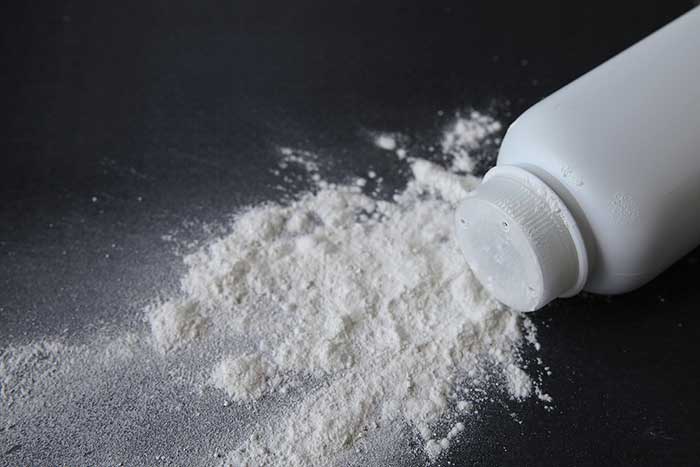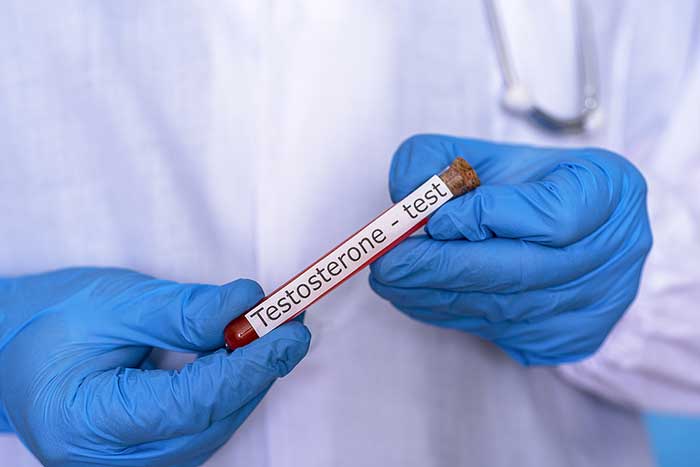
Despite all the advancements made in medical research and the new discoveries that are made on a regular basis, the use of toxic substances is still ongoing. Everything from perfumes, cleaning products, cosmetics, plastics, and even food contains one or more toxic ingredients that we consume. Along with air pollution, this means we are inhaling all kinds of chemicals that are bound to affect our health. Sure enough, many toxin-related diseases have surfaced in the past decade due to this harmful exposure. A common one is talcum powder poisoning. Without further ado, here’s what you need to do if you suspect that you have talcum powder poisoning.
What Is Talcum Powder?
Talcum powder is a common household item made from talc, a natural mineral; it has a component called asbestos which was proven to be a cause of multiple cancers. It’s known for retaining fragrance, being soft and smooth, and its ability to prevent inflammation that is caused by friction. That’s why talcum powder is found mostly in cosmetic products such as baby powder and personal hygiene products that keep the body feeling fresh. Talcum powder poisoning happens when the powder is accidentally or intentionally inhaled or swallowed.
Symptoms
Symptoms of talcum powder poisoning vary according to the amount consumed or inhaled. Some individuals, primarily those with respiratory diseases, are more prone to being affected by the powder. The symptoms include decreased or no urine output, eye and throat irritation, coughing, and low blood pressure. Inhaling the substance can also result in difficulty in breathing or rapid breathing. There are cases where vomiting and diarrhea occur, along with skin blisters and blue lips or fingertips. Acute cases could cause damage to the nervous system, which in turn cause lethargy, seizures, as well as twitching of facial muscles or arms, hands, and legs. Severe cases could result in heart failure or a coma.
How to Deal With Talcum Powder Poisoning
Call For Help
If you or someone you know is experiencing symptoms of talcum powder poisoning, you have to immediately call an ambulance to transport them to the hospital. Many think the right step would be to make the person vomit, but you shouldn’t unless a medical professional advises you to do so. Instead, transfer the affected person immediately to an area with fresh air where there isn’t any talc powder exposure. You should also contact the local poison control center in your area and inform them of the case so that they can give you informed instructions on what measures you should take next. Don’t forget to provide both entities correct information regarding the patient’s age, weight, and any significant health issues they might have.
Get Legal Advice
Many people are calling to end using talcum powder in common products to no avail. In fact, major companies, like Johnson & Johnson, continue to publicly use it despite its adverse effects on health. If your doctor confirms you are experiencing talcum powder poisoning and you find it as one of the ingredients in your personal products, it’s wise to contact a lawyer. You should get legal advice on how you can receive compensation from using a product with talcum powder. There are currently thousands of talcum powder poisoning lawsuits pending and a class-action lawsuit could result in a million-dollar settlement. These lawsuits target the manufacturers and usually involve the plaintiff getting a type of cancer, most commonly ovarian cancer, due to the prolonged use of products with talc powder.
How to Prevent Talcum Powder Poisoning
Now that you know the health concerns that come with using or being exposed to talcum powder, you should try your best to avoid it. You should search for alternative products to use that don’t have talc powder. If you’re using it for your baby’s diaper rash, for example, you can opt for using an ointment after each change. If you’re using it to prevent the skin irritation that occurs from clothing rubbing against skin or skin against skin, you can always replace it with a cornstarch substitute or use petroleum jelly before your activities. As for personal hygiene, there are plenty of non-talcum products including powders and spray to use that have the same effect. These usually include cornstarch with kaolin clay, arrowroot powder, and oatmeal to keep the skin dry and fresh.
There you have it, that’s how you can effectively deal with talcum powder poisoning. The most important tip to remember is to avoid taking any medical measures unless a professional advises you otherwise. The connection of talc powder to various types of cancer makes it not worth taking the risk despite its beneficial uses. There are many alternatives you can try for the same perks while ensuring your safety and wellbeing.


